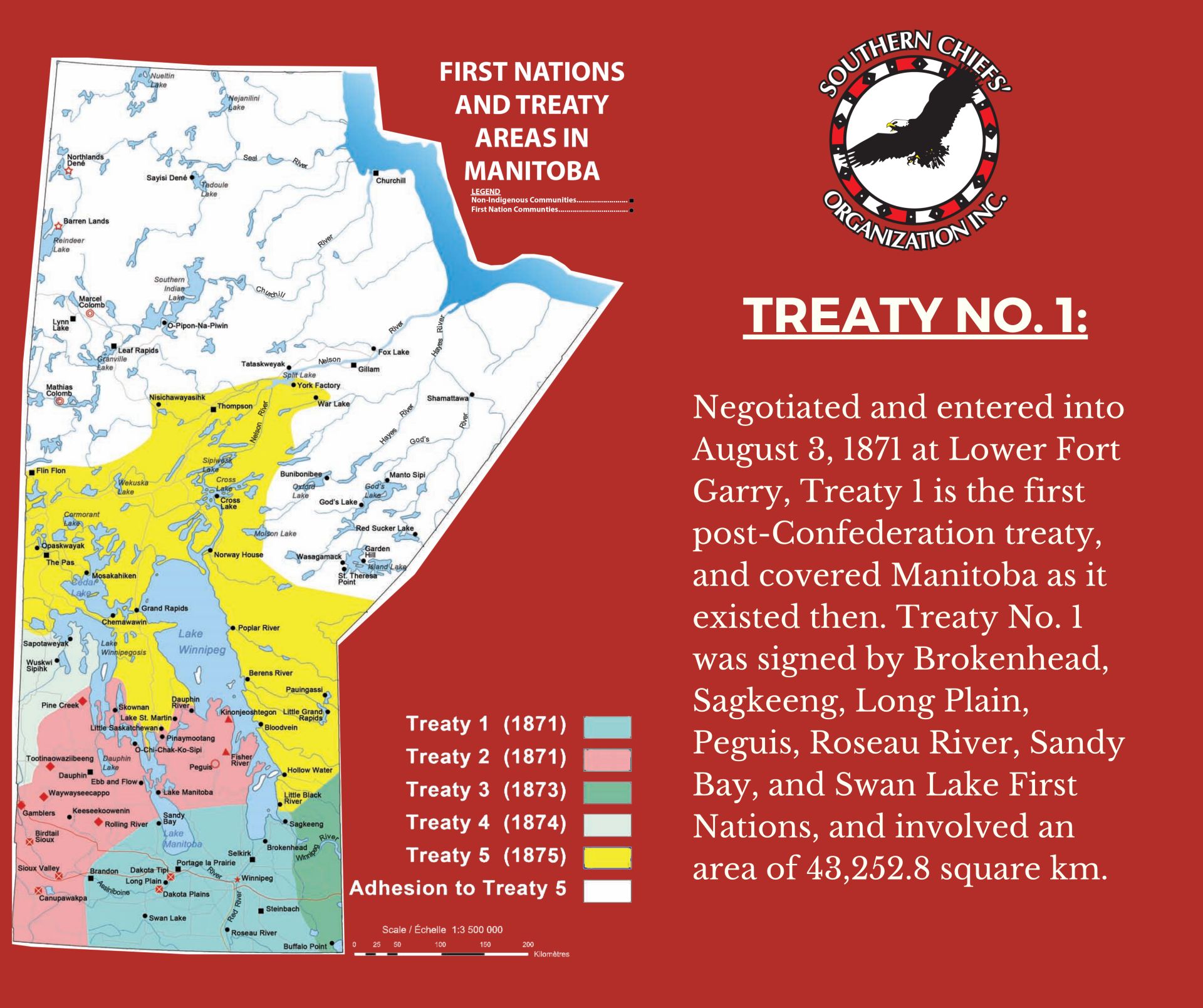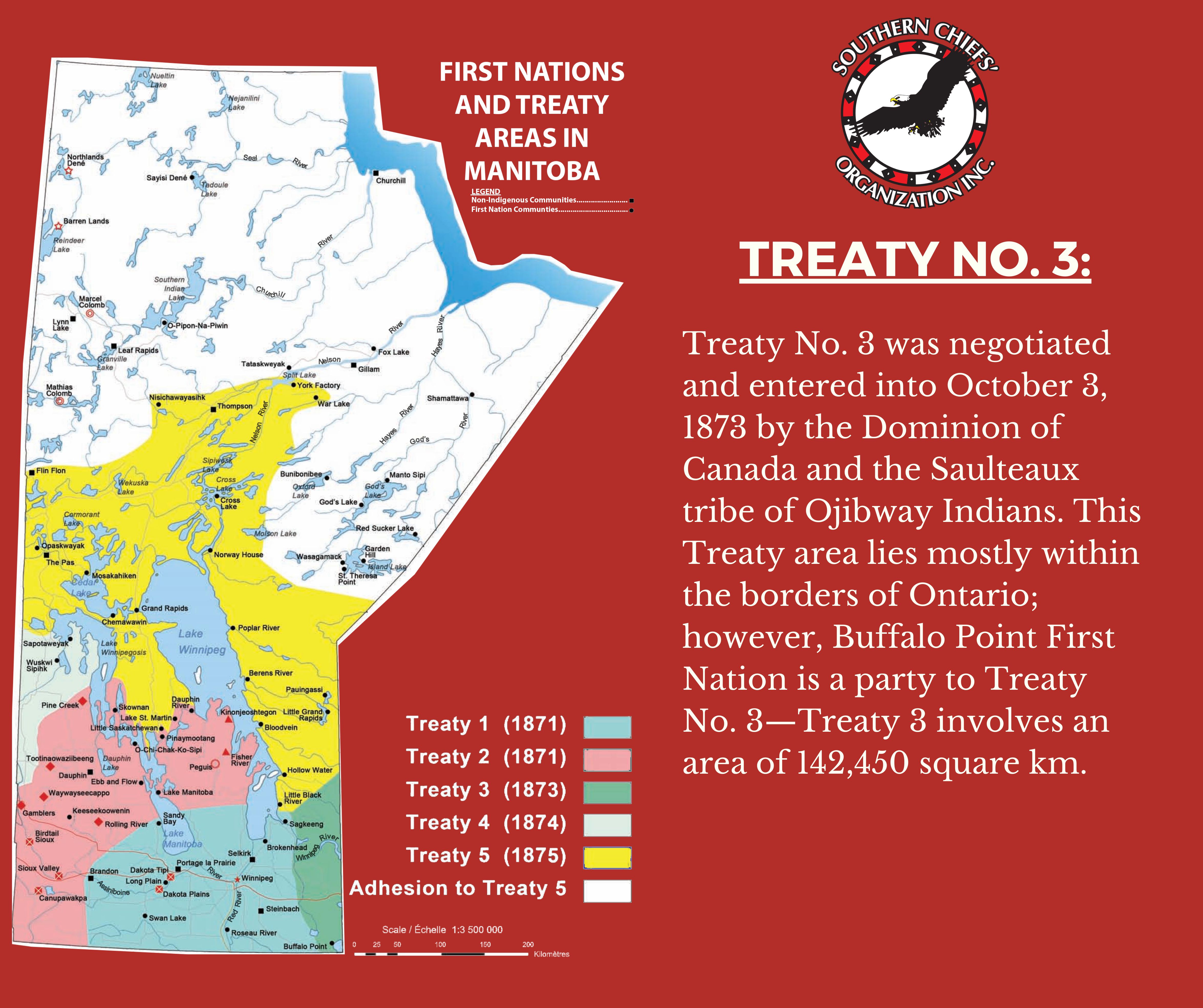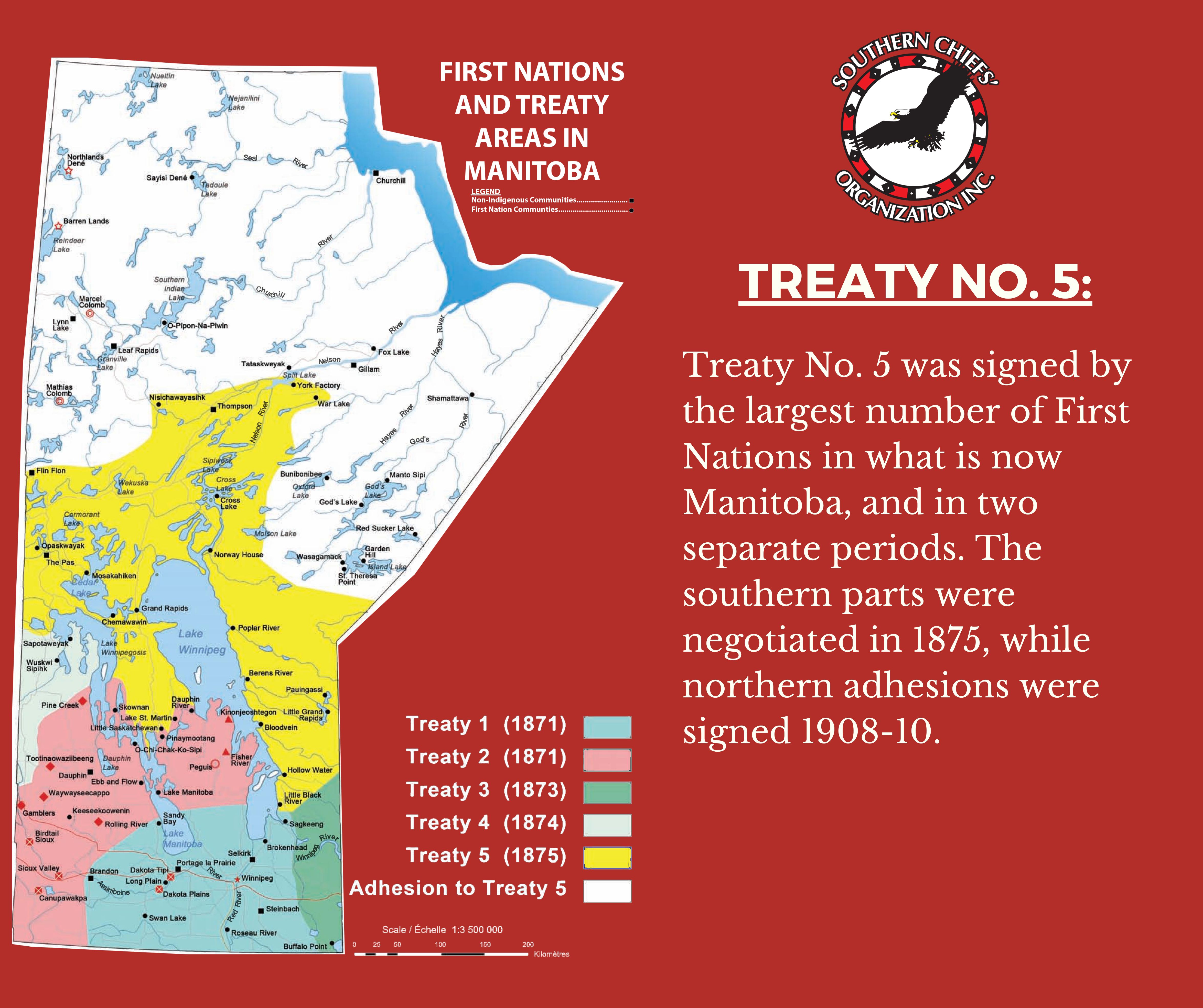Southern Manitoba Includes Treaties No. 1, 2, 3, 4, & 5
For more information on Treaties in Manitoba, visit the Treaty Relations Commission of Manitoba website.
Check out this interactive map that shows Indigenous territories, languages, and the Treaties.
Treaty No. 1
Treaty 1 was entered into by Brokenhead, Sagkeeng, Long Plain, Peguis, Roseau River, Sandy Bay, and Swan Lake First Nations.
A few of the Canadian communities sharing the obligations and benefits of Treaty No. 1 include: Winnipeg, Brandon, Portage La Prairie, Selkirk, Steinbach, Lundar, Grand Beach, Emerson, Winkler, and many more.
Some key Crown obligations included: 160 acres for each family of five or in like proportions for a smaller or larger family; a maintained school on each reserve; pay each family of five persons the sum of $15 or like sums for larger or smaller families; and lay aside and reserve for the sole and exclusive use of the First Nations’ inhabitants on the agreed lots of land.
Treaty No. 2
Treaty 2 was entered into by Dauphin River, Ebb and Flow, Keeseekoowenin, Lake St. Martin, Lake Manitoba, Little Saskatchewan, O-Chi-Chak-Ki-Sipi, Pinaymootang, and Skownan First Nations.
A few Canadian communities sharing the obligations and benefits of Treaty No. 2 include: Brandon, Dauphin, Melita, Minnedosa, Roblin, Virden, and many more.
Some key Crown obligations included: 160 acres for each family of five or in like proportions for a smaller or larger family; a maintained school on each reserve; pay each family of five persons the sum of $15 or like sums for larger or smaller families; lay aside and reserve for the sole and exclusive use of the First Nations’ inhabitants on the agreed lots of land.
Treaty No. 3
Treaty 3 was entered into by the Sauteaux tribe of Ojibway Indians within Ontario communities, however Buffalo Point First Nation was also entered into Treaty 3.
Communities that share in the benefits and obligations of Treaty No. 3 include: Falcon Lake, Middlebro, Point du Bois, and more. Much of Whiteshell Provincial Heritage Park is within the Treaty 3 area as well.
Treaty 3 obtained terms that far exceeded those of previous treaties, setting precedent beyond their own lands. In subsequent negotiations, First Nations requested the same terms as Treaty 3, which eventually forced the government to revise the term of Treaties 1 & 2. Treaty 3 became the definitive treaty, and all following treaties were based on it.
Among many others, some key Crown obligations which were increased from previous treaties include: one square mile of land for each family of five or an equal amount in proportion to family size; pay to each Indian person the sum of five dollars per head yearly (an equivalent income today would be $1,600+); or several additional supports for those with agricultural operations.
Treaty No. 4
Treaty 4 was entered into by Gambler, Pine Creek, Rolling River, Sapotaweyak, Tootinaowaziibeeng, Waywayseecappo, and Waskwi Sipihk First Nations.
Communities sharing the obligations and benefits of Treaty No. 4 include: Birch River, Mafeking, Swan River, Westgate, and many more.
Some key Crown obligations include: one square mile of land for each family of five, or an equal amount in proportion to family size; pay to each Indian person the sum of five dollars per head yearly (an equivalent income today would be $1,600+); a maintained school as soon as the First Nations settle on said lands and are prepared for a teacher, or the right to pursue avocations of hunting, trapping, and fishing throughout tracts of agreed lands.
Treaty No. 5
Treaty 5 was entered into by the Chemawawin, Berens River, Black River, Bloodvein, Cross Lake, Fisher River, Grand Rapids, Hollow Water, Kinonjeoshtegon, Mosakahiken, Norway House, Opaskwayak and Poplar River First Nations—involving an area of 259,000 square km in what is now central and northern Manitoba and with parts in Saskatchewan.
A few communities sharing the obligations and benefits of Treaty No. 5 include The Pas, Wabowden, and Gypsumville.
Among many others, some key Crown obligations include: one hundred and sixty acres for each family of five, or an equal amount in proportion to family size; pay to each Indian person the sum of five dollars yearly (an equivalent income today would be $1,600+); a maintained school whenever the First Nations shall desire one, or the right to pursue avocations of hunting, trapping, and fishing throughout tracts of agreed lands.
Additional Resources:
- The Gordon Foundation – Understanding Treaties and Treaty Negotiation
- Land Claims Coalition – Treaty Resources
- Declaration of Fort Carlton 2007 (PDF)
- National Indian Treaties 1-11 Gathering 2006 (PDF)
- Resolution on TCA Medicine Chest (PDF)
- Resolution on Treaty Protection Office 2007 (PDF)











